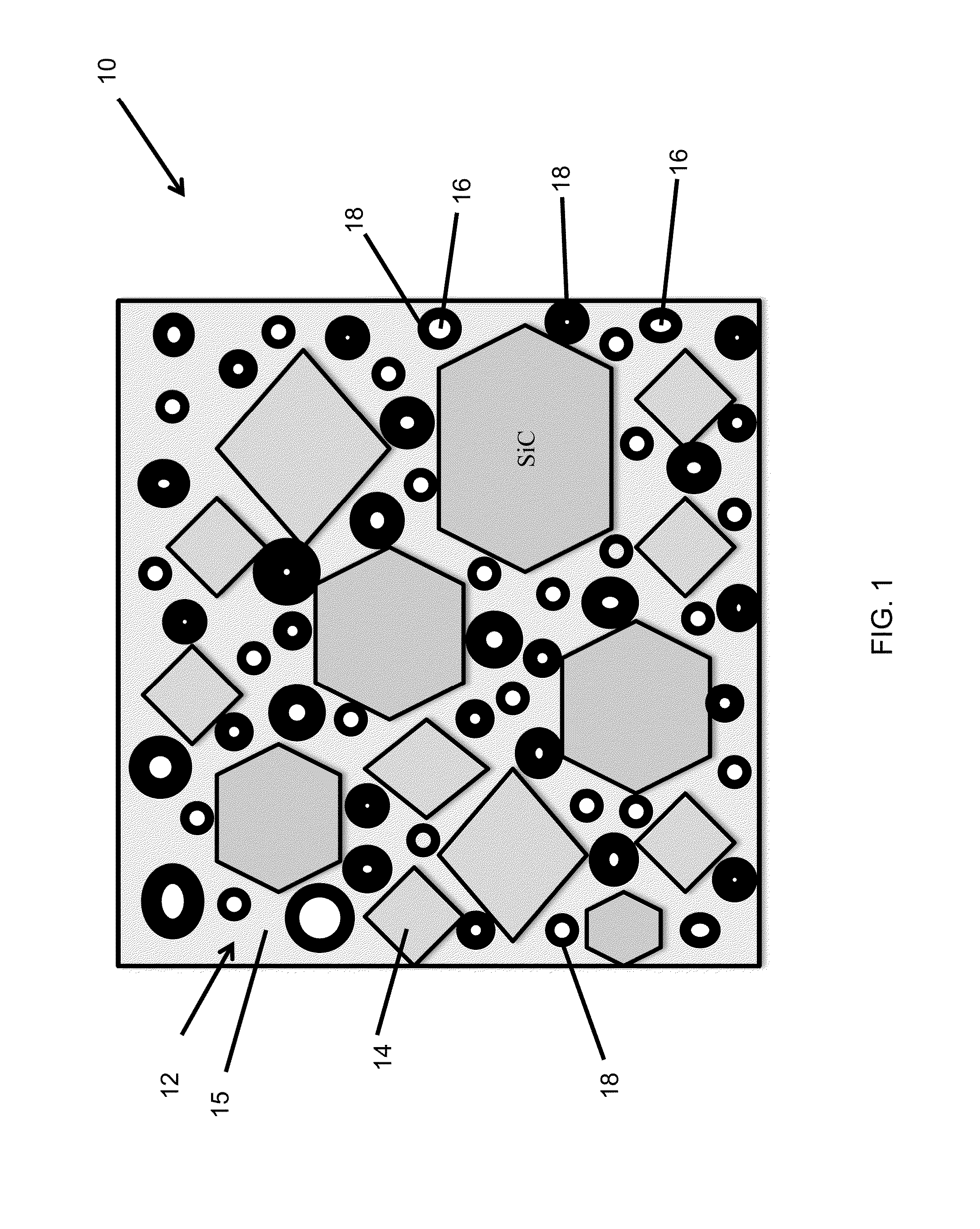Method of producing a melt-infiltrated ceramic matrix composite article
a ceramic matrix and composite material technology, applied in the field of ceramic matrix composite material (cmc) articles, can solve the problems of increasing production costs, excessive and undesirable outgassing, and inability to produce a preform with an infiltrated shell surrounding an uninfiltrated core, so as to promote infiltration, promote infiltration, and reduce the likelihood of choking
- Summary
- Abstract
- Description
- Claims
- Application Information
AI Technical Summary
Benefits of technology
Problems solved by technology
Method used
Image
Examples
Embodiment Construction
[0016]The present invention will be described in terms of processes for producing CMC articles through melt infiltration techniques performed on a porous preform to yield a matrix containing SiC. According to a preferred aspect of the invention, the preform is produced by firing a prepreg preform formed by impregnating a fiber reinforcement material with a matrix slurry composition that contains one or more ceramic precursors. The slurry composition is formulated to reduce the tendency for the reaction of the ceramic precursors to inhibit (“choke-off”) the subsequent infiltration of molten silicon into the fired porous preform during a melt infiltration process, so that the molten silicon is able to more quickly infiltrate the porous preform. In addition, melt infiltration of the preform preferably does not require a carefully controlled atmosphere or pressure to achieve full infiltration. Instead, the preform can be melt infiltrated in a protective atmosphere, for example, flowing ...
PUM
| Property | Measurement | Unit |
|---|---|---|
| weight percent | aaaaa | aaaaa |
| particle size | aaaaa | aaaaa |
| weight percent | aaaaa | aaaaa |
Abstract
Description
Claims
Application Information
 Login to View More
Login to View More - R&D
- Intellectual Property
- Life Sciences
- Materials
- Tech Scout
- Unparalleled Data Quality
- Higher Quality Content
- 60% Fewer Hallucinations
Browse by: Latest US Patents, China's latest patents, Technical Efficacy Thesaurus, Application Domain, Technology Topic, Popular Technical Reports.
© 2025 PatSnap. All rights reserved.Legal|Privacy policy|Modern Slavery Act Transparency Statement|Sitemap|About US| Contact US: help@patsnap.com


